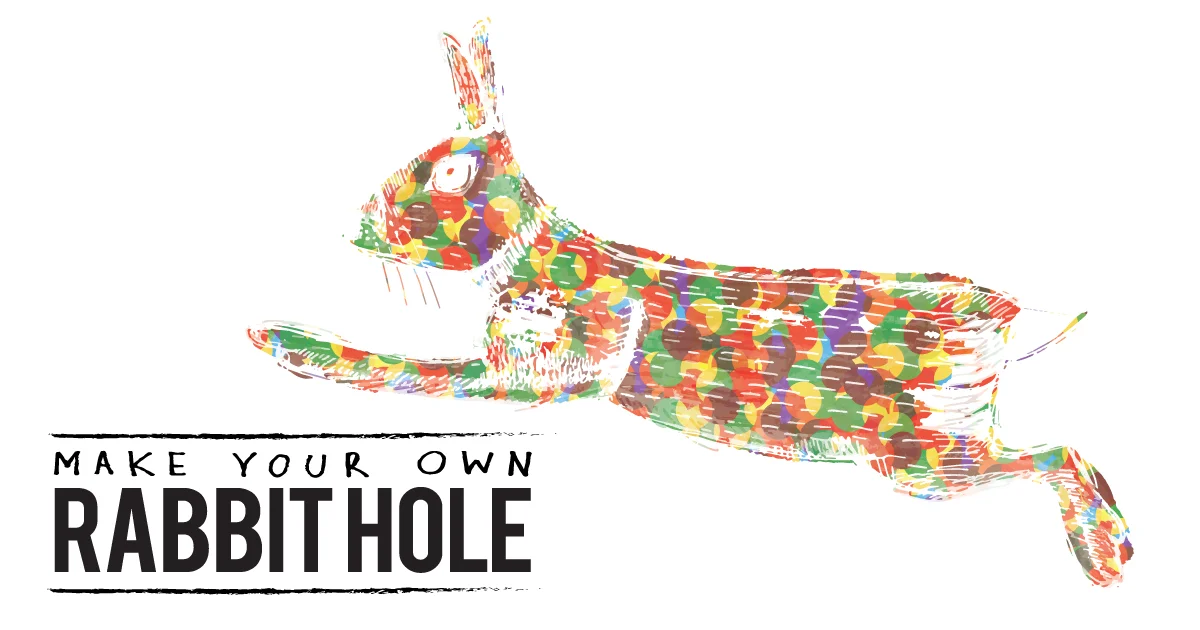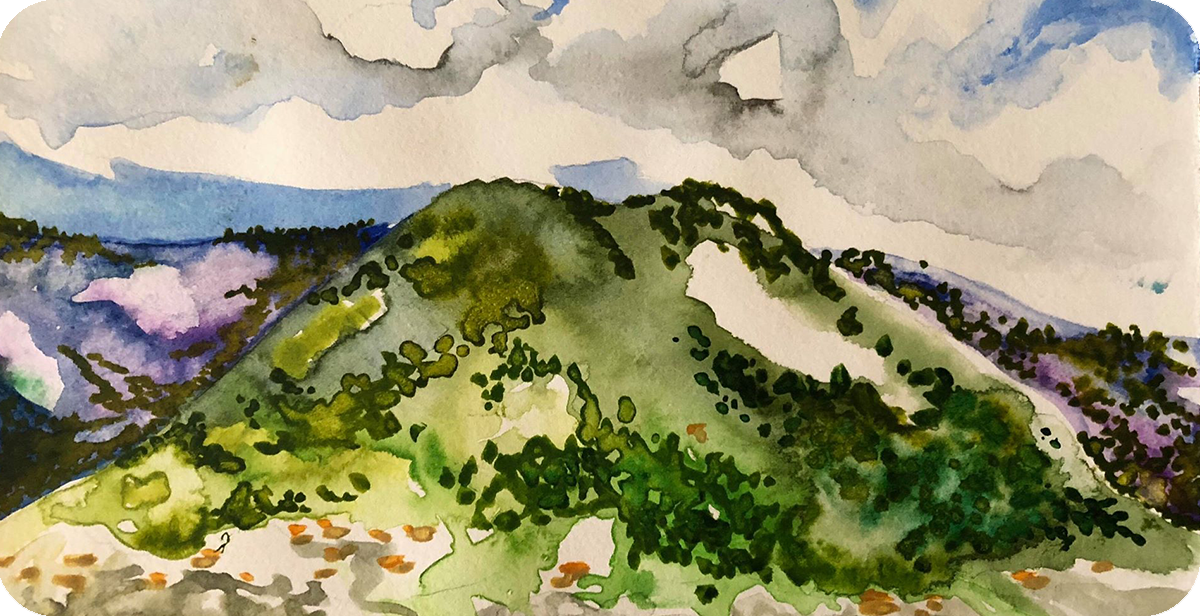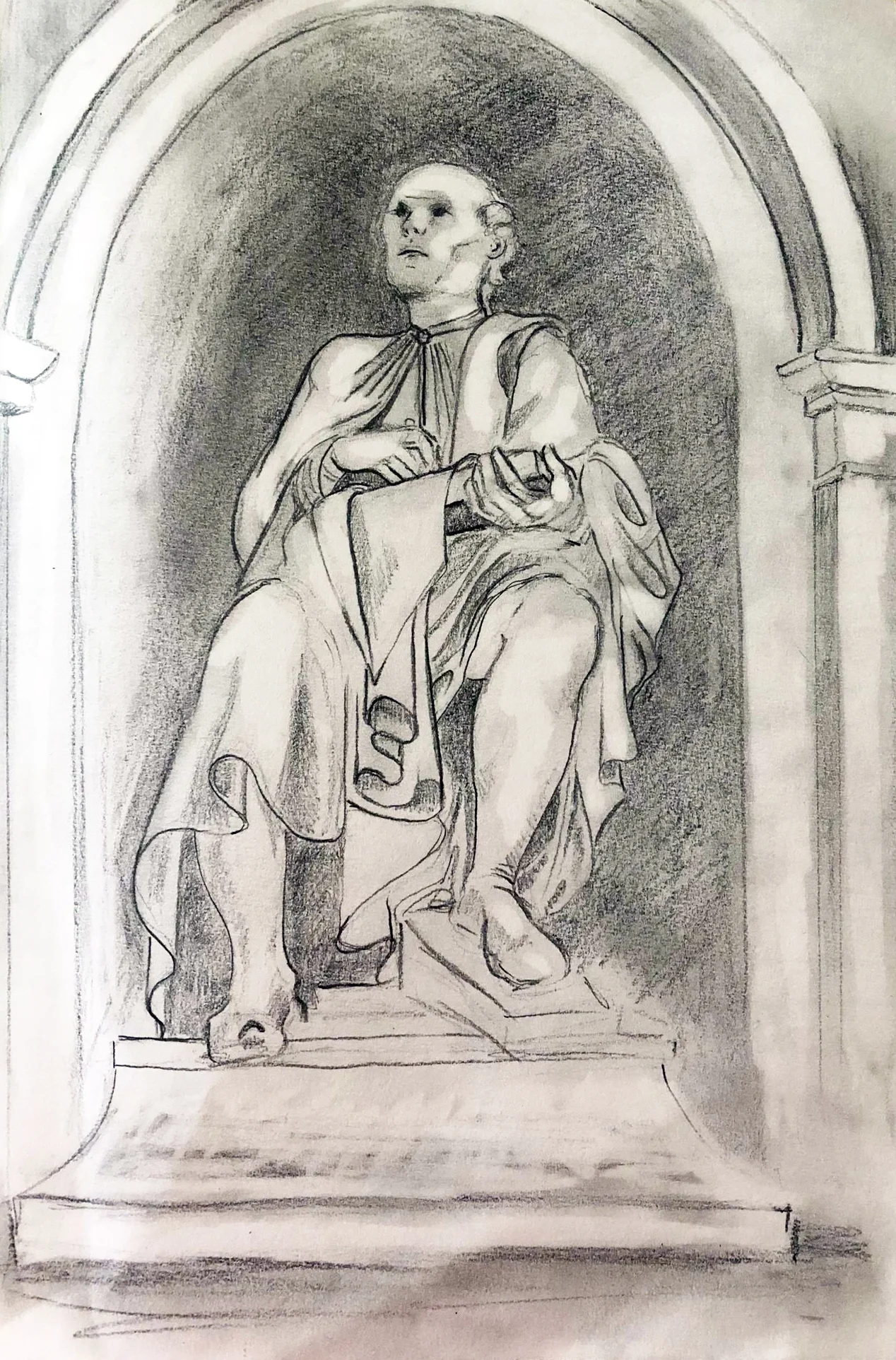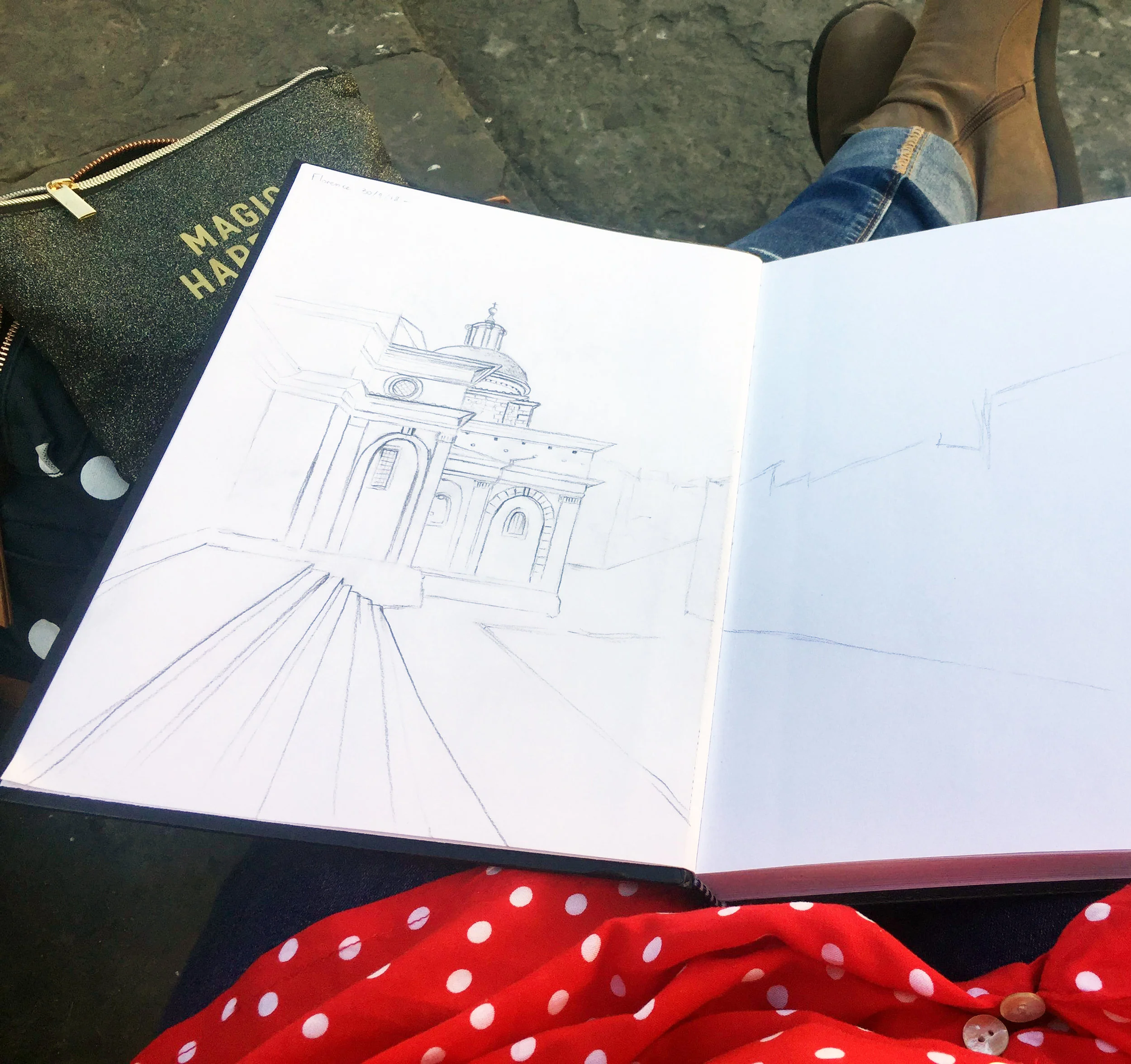Slow down, Stand back, Paint one detail at a time
/An interview with Tracey Read by Ant Gray
“I’m a big picture kind of person,” says Perth artist and songwriter Tracey Read. “Details have always bored me. I like snappy conversation with a witty punchline, and I see it in my paintings,” she says. “Developing the ability to pay attention to the details, in life and art, is my next step.” To work towards this, Tracey recently spent a month drawing and painting her way around Italy.
What prompted your recent trip?
I had wanted to go on an art retreat in Tuscany for years. I can’t remember what put the idea in my head. This year, my long service leave was due and I decided that now was the time.
Was it always going be a creative getaway?
Yeah. With the retreat being the main reason I was going, I decided I would make it an art immersion holiday. Which is why I chose to go alone. I didn’t want anyone else to get bored while I sat in the piazza sketching for hours.
Where did you go?
I spent a few days in Rome before heading to Florence where I had an apartment for two weeks. I took some day trips from Florence to Sienna and Cinque Terre, and then headed to Tuscany for the retreat near a little town called Chuisi. We visited several Tuscan villages during the retreat—they were so beautiful!
retreat Studio in Tuscany
How long did you spend each day drawing and painting?
There were a lot of days where I didn’t do any art at all, as I was off on day trips or generally being a tourist. Those days I would take a lot of pictures for reference material. Other days I would spend several hours drawing and painting—until my eyes were sore on some occasions! When I was on the retreat was the most intensive, with half days and some full days in the studio, working around our cultural day trips.
Who ran the retreat?
A charming Englishman named Julian. He had been a high school art teacher in England before buying a run-down farm in Tuscany, which he renovated and opened as an art retreat. He was incredibly skilled and knowledgeable. I learnt so much that I am just itching to put into practice now that I’m home. His business can be found under the original name ‘Artist in Italy’ or the more recent name of ‘Easel and Lens’ now that he has expanded his business into photography and retreats in other parts of the globe.
He’s living my dream! (Laughs)
Cinque Terre Watercolour
I was going to ask that. Do you think you’d like to do something similar back here in Australia? You were running adult art classes there for a while.
Yeah, a pipe-dream of mine is to open something similar. Buy a little property—somewhere gorgeous—with the space to build some simple accommodations and a large studio. I’d love that!
I’m not running adult classes at the moment, unfortunately, due to space and time being in short supply. It’s always on my mind for the future.
So what art supplies did you take with you? I guess you had to keep things simple.
Cinque Terre Watercolour
Yeah, I didn’t take much. Just a sketch book, a pencil case with lead pencils, an eraser and so on. My new watercolour set and watercolour paper and also some watercolour pencils. I thought any other paints would be too messy and hard to work with on the go. Oh, and art liner pens, of course.
What’s was one of the breakthroughs technique-wise you made during the retreat?
I had just started venturing into the world of watercolours on this trip, due to how easily they are to pack and quick to dry. But I was using them the same way I use paint, which is to work the whole page at once. Julian sat down with me and showed me how to focus on one thing at a time, and to not move on until I had completed it. So I would work on one tree until I got it right, then another tree.
And that lead me to realise that I create art the same way I live my life. (Laughs) Everything all at once and forgetting to focus on one thing at a time and make sure I’m getting it right.
What an insight!
Yeah, it was quite an introspective trip! With all that time alone, these insights were just itching to rise to the surface.
I guess once you reach a certain level of skill like you have, it’s hard to learn something new, especially something so radical that it changes your whole way of working.
I was ready for it and wanted it. I always want to keep learning. Trying to work the whole page was something I tried to develop, and working one thing at a time.
Working the whole page versus focusing on one detail at a time: are those two things at odds with each other?
You could say that. They are two different ways of working. I had been somewhat out of balance with my painting. When I’m drawing, I’m very happy to sit and focus on details for hours, but with paint I’ve always been so loose and free. I love this way of painting as well. It’s the same way I write songs. Kind of fearlessly, with no filter. Whatever comes out is the product, but now I’m working on having both of these aspects in my work—the loose quick ‘fun’ approach to painting, and then working into it with a serious focus on the details.
Any pictures you made on the trip in particular that lead to any breakthroughs?
Tuscany Watercolour
The first watercolour I did. It was the first individual piece I started at the retreat—after Julian had given us some tutorials on a few different things, like how to use photography as your jumping off point, line studies, light and shadow studies and perspective studies.
I began the watercolour study the way I’ve always worked, trying to capture something quickly. But I was using the watercolours too loosely and it all looked like one tone, and washed out. I hadn’t finished the piece yet and it had been my intention to keep working it when Julian suggested I start again. I do get satisfaction from working quickly, and not getting bogged down, but I do tend to sacrifice details when I do this.
Julian is an incredibly detailed painter. His work is very realistic and I think details are the feature. So he sat down with me and demonstrated painting one tree.
Bringing in my focus from trying to do everything at once, to focusing on getting this one thing right was completely new to me.
Tuscany Watercolour
I’d been taught to work the whole painting. The sense of satisfaction I felt when I painted that first cypress tree, layering on the light and shadow. Gently teasing out the branches and adding the delicate details was really satisfying, and I was excited by the results.
He explained that I shouldn’t move on until the tree I was working on was right, then to move on to the next tree and the next. I was so happy with the end result I announced that I wanted to try and start working more slowly from now on.
Any others you were really happy with?
Cinque Terre Watercolour
The watercolours I painted after a day trip to Cinque Terre. I worked from photographs. I had only just begun to play with watercolours at this point and I was trying to figure out how they worked best.
I was still working the whole page, like oil or acrylic painting, but I was getting confident enough to just let things happen. I like the bright colours of these pieces, and quick strokes of colour match the vibrancy of the place. I was very happy with those.
Any sketches?
A drawing of a sculpture just next to Duomo in Florence. I should have written down who the statue was of, but I didn’t. My lack of an eye for details strikes again! (Laughs)
I love drawing flowing material so this was nice practice and his whimsical expression made him the perfect subject. I am so in awe of classical artwork, maybe that’s why I am always striving to improve with my work. There is so far to go.
Duomo Sketch
I was also happy with an acrylic painting from the retreat in Chiusi. I started it the day before we had to leave, so I couldn’t work on my oil paintings as I was needing them to dry before travelling. So I began this quick acrylic painting of the road just outside the house.
Julian had shown me a technique where the artist stands far away from the work most of the time and looks at the overall picture to focus on accuracy. I found this really challenging, but he was trying to slow me down. That’s what I’d told him I wanted to do because I paint so fast. I wanted to try and take my time and be more focused. This work is still in progress, but I like the overall feel of it, even if it looks quite naive.
Chiusi Acrylic painting
That’s really interesting about standing at a distance from what you’re working on. I never thought about it. I guess that’s why some paintings look figurative at a distance, but when you move closer to look at the detail, the more abstract they become.
Julian’s advice seems counter-intuitive—moving away from what you’re working on, helping with accuracy. I guess the tendency is to want to stick your nose up close when painting to get the detail right.
When we are working on a painting we’re generally up close. But being so close can often lead to getting things out of perspective and proportion. Julian had his latest piece that he was working on in the studio. His chair for looking the work was on the other side of the studio, about five metres away. He said he spent a lot of time in the chair just looking at it. When you stepped back you can really see it.
Chiesa san Domenico in Arezzo Watercolour
He showed me a video of two art students using a specific technique that I just can’t remember what it’s called. I wish I could find it again. They were both painting the same model and they were side by side. One would stand back and look while the other painted a few strokes, then they would swap. One couldn’t move forward until the other moved back. This forced the students to stand and look at both the model and their work in the same frame of vision. Spending this much time standing back allowed them to really see what was in front of them. It was an exercise in seeing what is really there, instead of what we think is there.
Since I had expressed an interest in slowing down, this is what Julian recommended—that I spend more time looking at the landscape and the painting in the same frame of my vision. When I was standing back, what stood out most was the light and dark of the image and the shapes. I couldn’t see the details so well. But I could see overall if my painting was representing the landscape I was working from well or not.
If you hadn’t noticed, I’m someone who finds analogies in everything. For me it highlighted the importance of standing back from things, putting things into perspective. Leaning into things helps you work out the details, but you must stand back again to see how they all fit together.
It sounds like on your trip you would have done a lot of painting and sketching outside. How did people react to you while you were working?
Unfinished Sketch Basilica of Santa Croce in Florence
It was interesting. Often people would come up and look at what I was doing silently, but occasionally some would comment, saying ‘beautiful’ or something like that. Most were respectful and didn’t want to disturb me. But then there were one or two tourists that would stand really, really close and stare at what I was doing—like I was an exhibit! That was strange. (Laughs)
Only one time I had to leave early because a guy wanted to take me out for coffee. He kept coming back to see if I was finished. Then he started trying to hurry me along! So I dashed off while he wasn’t looking, leaving my drawing unfinished.
Stupid coffee guy! (Laughs)
Whenever I travel, I often feel embarrassed about being a tourist. How did it feel being a tourist who had a reason to be a tourist? I’d imagine it was freeing to have a legitimate reason to linger and stare.
I can relate to that. I hate feeling like a tourist as well. But this felt really good because I didn’t feel like I was there to consume. I was there to create and it’s a different dynamic. And drawing something makes you feel incredibly familiar with what you’re drawing.
Tourism can be so intrusive. It often has a negative impact on locals.
Absolutely! Especially in narrow streets like in Florence and Rome. Sometimes there were so many tourists in the streets cars could barely move. I’m sure it would be incredibly frustrating!
Tourists snapping photos can be really intrusive too. I know you said you took pictures as well, but is there something more intimate about sitting down to sketch and paint? A mindfulness to it?
Definitely. Photos are great for memories and quick reference material, but sitting and drawing makes it an experience. For me, the experience is very mindful. I don’t think about anything else when I make art. I’m in a purely observational state.
Susan Sontag once wrote about how tourism and photography go hand in hand. That photography is not only integral to the voyeuristic consumption of other cultures, but the camera can also be used as a tool to make us feel less vulnerable in strange places.
Interesting.
She said that,
“The very activity of taking pictures is soothing, and assuages general feelings of disorientation that are likely to be exacerbated by travel. Most tourists feel compelled to put the camera between themselves and whatever is remarkable that they encounter.”
What’s different about sitting down in unfamiliar places to sketch one thing rather than snapping endless photos?
In some ways, you are more vulnerable when sketching. You obviously have to stay in one place for a very long time, and you are immersed in what you are doing so this potentially could make you a target for pick pockets or random dudes. (Laughs) Although you’re still being a voyeur—still trying to capture something from the culture.
It’s an interesting point about a camera helping you feel less vulnerable. It adds a certain solidness to a moment when you take a picture, especially in this age where we can post on social media and say, ‘Look where I am!’ After I broke my phone, I had no way of taking any more photos, so for my last week in Italy I have no photos.
I remember walking to monuments in Rome and when I got there, I’d have to just stand and stare, so that I could remember the moment and the details. Maybe in a way, that made me more present than if I’d had a camera with me.
I’ve had that experience a few times recently not having a phone on hand, having to stand there telling myself, ‘Nah, just look—be present. You don’t need your phone to experience this.’
It’s scary at first, isn’t it?
Did you make any friends with other creatives while you were away?
I made some great friends along the way. What made the retreat so memorable were the people.
Art session Florence
Funnily enough, after that—after two weeks of solitude, where the only time I actually spoke to anyone was to ask for food at restaurants the occasional, ‘buongiorno’—I was thinking it would be nice to meet people and have a conversation. A couple of days later, I was on a day tour to Cinque Terre and was sat at lunch with two lovely women from Salt Lake City. We struck up a conversation. They were on a women’s retreat, to get in touch their creative side by immersing themselves in the culture of Florence. So we had this much in common. I really enjoyed our conversation and asked if they’d like to have dinner the next night back in Florence, which we did.
It was wonderful getting to know them. At dinner they asked if I would give them an art lesson before we all left Florence, so the next night after dinner and a walk to Piazzale Michelangelo to watch the sunset, we had a little art session in my apartment.
Tuscany Oil Painting
So, what’s ahead for you next year? Any plans to turn the work you did on your trip into another show? Any more retreats planned?
There’s a plan for an exhibition for sure, once I get some time to work on some more new things. I’d love to go on another retreat. It’s just of matter of finding things that line up with school holidays. I’ll be working four days a week as a primary school art teacher next year and I’m really looking forward to that. My first time with only one role in a school.
My main goal is just to keep learning, and keep improving my knowledge as an artist and who I am as a person.
That will be ongoing! (Laughs)
Tracey Read is a Perth-based artist who also writes, sings and performs with her band, The Wine Dark Sea. You can see more of her work at traceyread.com or by following her on Facebook.
All images © Copyright 2018, Tracey Read


























Painter Tracey Read talks about spending four weeks painting and drawing her way around Italy.